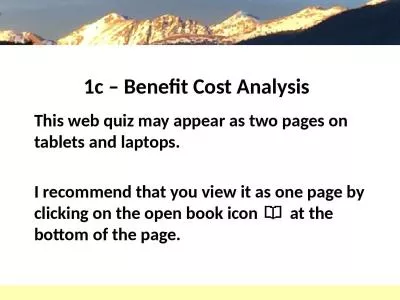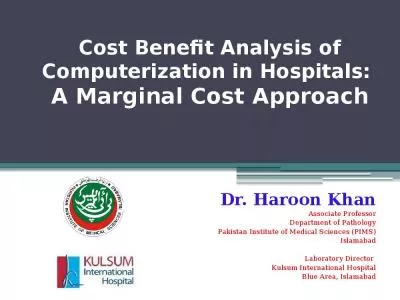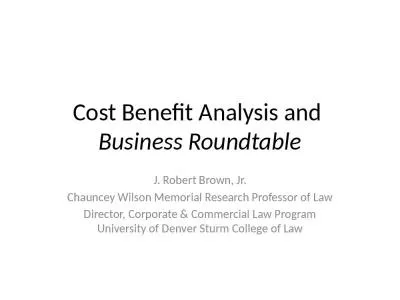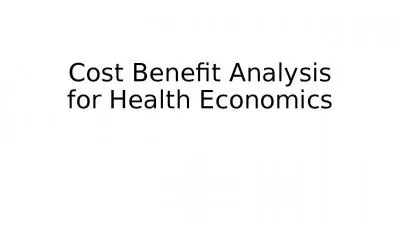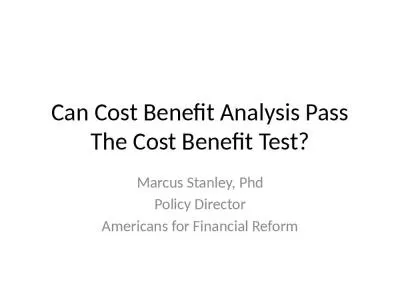PPT-Chapter 6: An Introduction to Benefit-Cost Analysis
Author : claire | Published Date : 2023-11-05
Information is a source of learning But unless it is organized processed and available to the right people in a format for decision making it is a burden not
Presentation Embed Code
Download Presentation
Download Presentation The PPT/PDF document "Chapter 6: An Introduction to Benefit-Co..." is the property of its rightful owner. Permission is granted to download and print the materials on this website for personal, non-commercial use only, and to display it on your personal computer provided you do not modify the materials and that you retain all copyright notices contained in the materials. By downloading content from our website, you accept the terms of this agreement.
Chapter 6: An Introduction to Benefit-Cost Analysis: Transcript
Download Rules Of Document
"Chapter 6: An Introduction to Benefit-Cost Analysis"The content belongs to its owner. You may download and print it for personal use, without modification, and keep all copyright notices. By downloading, you agree to these terms.
Related Documents

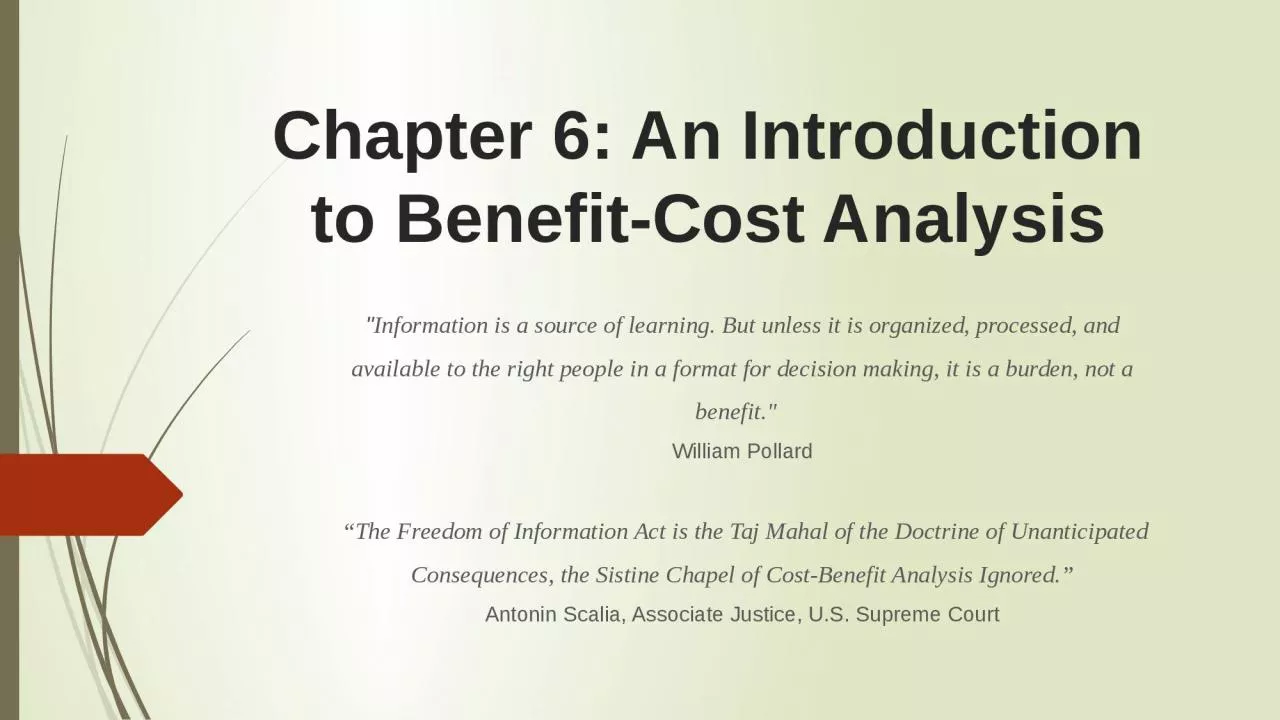

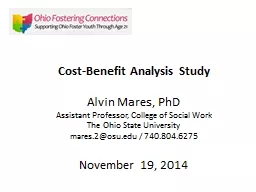
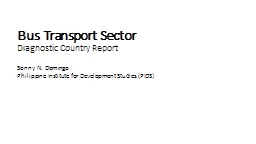
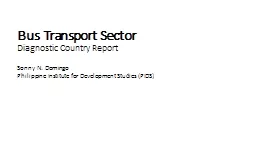
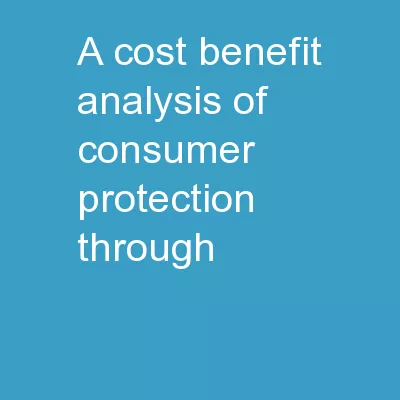
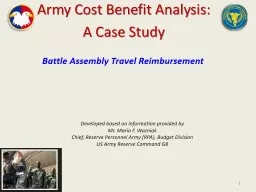
![[PDF READ ONLINE] Retaking Rationality: How Cost-Benefit Analysis Can Better Protect the](https://thumbs.docslides.com/1019702/pdf-read-online-retaking-rationality-how-cost-benefit-analysis-can-better-protect-the.jpg)
